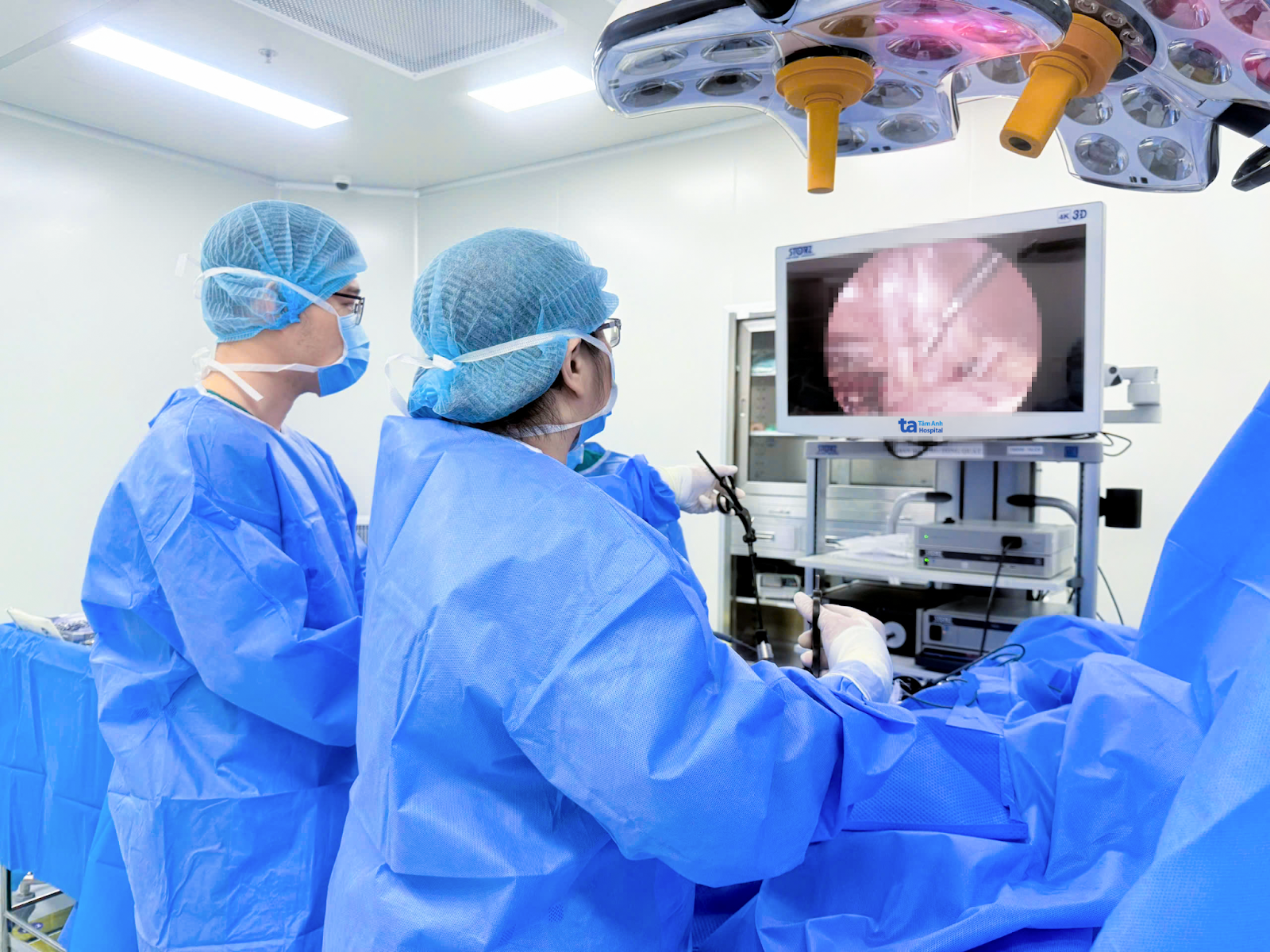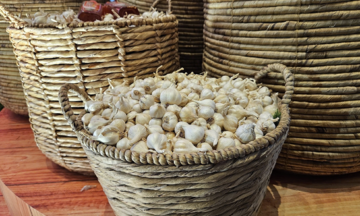An endoscopy and ultrasound revealed multiple small cysts in Son's pancreatic tail, the largest measuring 11 mm. A 1,975-slice CT scan showed the pancreatic tail, measuring 9x29 mm, communicating with the pancreatic duct and containing thin septations. Dr. Vo Ngoc Bich of the Hepato-Pancreato-Biliary Department at Tam Anh General Hospital's Center for Endoscopy and Minimally Invasive Digestive Surgery in Ho Chi Minh City diagnosed Son with a pancreatic cyst, suspected to be a mucinous cystic neoplasm (MCN) with a high risk of malignancy. Surgical removal was recommended.
 |
The 1,975-slice CT scan reveals the lesion in the pancreatic tail (yellow arrow). Photo: Tam Anh General Hospital |
According to Dr. Bich, removing a pancreatic tail cyst is a complex procedure due to the pancreas's deep location in the abdomen and the patient's thick abdominal wall. The pancreas is close to major blood vessels like the splenic artery and vein, the common bile duct, and the duodenum, making it easy to affect surrounding organs during surgery. Son also had underlying conditions like high blood pressure, hepatitis B, and gout.
After consultation, the surgical team decided on a laparoscopic approach. However, during the procedure, they found the cyst was invasive, the splenic vein was difficult to mobilize, the pancreatic tissue was friable and prone to bleeding, the head of the pancreas was deeply embedded in the abdominal wall, and the greater omentum was adhered to the pancreatic tail. Consequently, they switched to an open surgery. After mobilizing the body of the pancreas, the surgeons transected it, removed the body and tail along with the mass invading the splenic vessels, and removed the spleen. Finally, they sutured the pancreatic remnant and closed the abdomen.
Son recovered well after the surgery, was able to walk around, and was discharged after 5 days. The pathology report confirmed a low-grade dysplastic mucinous neoplasm of the pancreas, with benign splenic tissue. While no further treatment was needed, Son was advised to have regular check-ups and maintain a healthy diet and exercise regimen.
 |
Dr. Ngoc Bich (far right) performing laparoscopic pancreatic tail resection on Son. Photo: Tam Anh General Hospital |
The pancreas is a vital organ with both exocrine and endocrine functions. It produces digestive enzymes and helps maintain stable blood sugar levels. Surgical removal of potentially malignant cysts is crucial to prevent cancer spread and improve the patient's quality of life.
Risk factors for pancreatic cysts include genetics, cell mutations, alcohol consumption, pancreatitis, gallstones, and abdominal trauma. The condition is often asymptomatic and discovered incidentally during imaging for other conditions.
Quyen Phan
*The patient's name has been changed.
| Readers can submit questions about digestive diseases here for doctors to answer. |












